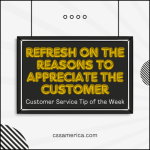The error was obvious. Shania is a clerk at a local government office, and she could tell that something was wrong with the permit request. She was about to reject the request because the address was invalid.
If this would have been handled like the normal process, Shania would have marked the request as rejected, and the resident would receive an e-mail within the next week that was automatically generated from the system.
The message would simply say that the request had been rejected and for the resident to contact the local permitting office.
Pause to Find the Cause
But instead of doing what’s normally done, Shania made a little extra effort. She decided to do a little investigation. She found out that the resident had submitted the request by filling out a form, and that one of Shania’s co-workers entered the information into the permit request system. What the resident wrote down and what was keyed into the system were different. The co-worker had made a keying error.
Shania updated the information in the system, so the permit was officially completed correctly and was allowed to continue through the review process.
Consider the Impact Beyond the Moment
Shania’s simple act of patience, this simple investigation, this simple questioning why somebody would have put in an invalid address – these actions avoided a lot of issues. The resident didn’t have to wait a week for a rejection notice that they would have to follow-up on and address. A co-worker wouldn’t have been brought under scrutiny by an angry customer for the error. The delay in the permit process for the customer would not happen. Additional work for the team to reprocess the request would not have to happen.
By being patient, asking herself a couple key questions based on her experience, and discerning what would be the best approach overall rather than what would be most expedient in the moment – these actions resulted in a better customer experience and time saved for her team.
Pause to find the cause, instead of simply kicking the problem down the road.
Signup for FREE Tips! Contact Us More Resources for You Visit Our Home Page
























